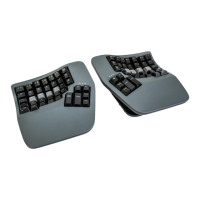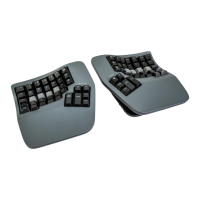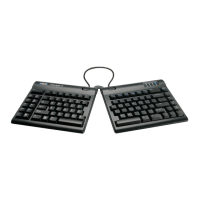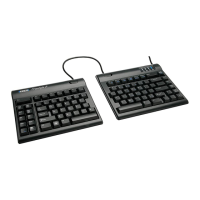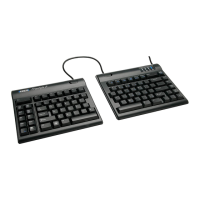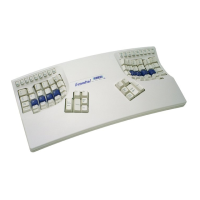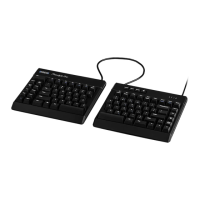30
between English and your desired language, type that key with both drivers to make yourself a custom
language dictionary. Then use the English version of that key in the layout file. If macros are played while a
different keyboard language is active than the language in which it was designed, some actions will change.
Layout files are updated only when the v-drive is closed.
Any given layout can be modified by both onboard programming commands and through direct editing. Be
cautious about using both on-board programming and direct editing while the v-drive is open. If you use on-
board programming while the v-drive is open and/or while the active layout file is open, be aware that on-
board programming changes are not usually read from saved layout files until the v-drive is closed.
Note: If you save your edits and re-select that layout using the onboard programming shortcut (e.g. progm +
F3 for the qwerty.txt layout), the recently saved edits will be implemented even though the v-drive hasn’t been
closed.
7.9 Basic Syntax Examples
Below are several examples of the actual syntax used to encode certain remaps and macros. This “code” can
be copied and pasted into a layout file and then edited to produce a custom macro.
Remaps
Syntax Example 1: The Q key location will perform the letter “a”.
[q]>[a]
Syntax Example 2: The Right Windows key location (always the default Win Mode location) will be
deactivated using the “null” token.
[rwin]>[null]
Syntax Example 3: When the keypad layer is active, the A key location will perform the “Volume Down”
action.
[kp-a]>[vol-]
Macros
Longer macros can be tedious to write from scratch so onboard programming is recommended, at least as an
initial step. Direct Editing can be a useful tool for creating shorter macros or fine-tuning longer macros. Take
advantage of existing macros and examples where possible. Note: Macros normally play when the trigger key
is depressed, without waiting for release.
Syntax Example 4: Pressing and holding Right Ctrl and the G key location plays the text macro “go”.
{rctrl}{g}>{g}{o}
Syntax Example 5: When the keypad layer is active, the Escape key location plays text macro “hello”.
{kp-escape}>{h}{e}{l}{l}{o}
Shifted characters
As shown below in Syntax Examples 6 and 7, the {-shift} represents the negative or downward action of
pressing the shift key, while {+shift} represents the positive or upward action of releasing the shift key.
Bracketing a token with {-shift} and {+shift} emulates holding down the shift key while typing the bracketed
key, and then releasing the shift key to produce the equivalent shifted action of that key.
Syntax Example 6: The Pause key location plays the text macro “Hi Joy!".
{pause}>{-Lshift}{h}{+Lshift}{i}{space}{-Lshift}{j}{+Lshift}{o}{y}{-Lshift}{1}{+Lshift}
Syntax Example 7: The F12 key location plays the text macro “1+2=3”.
{f12}>{1}{-Rshift}{=}{+Rshift}{2}{=}{3}
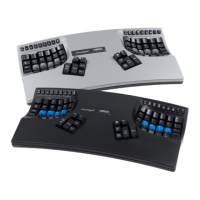
